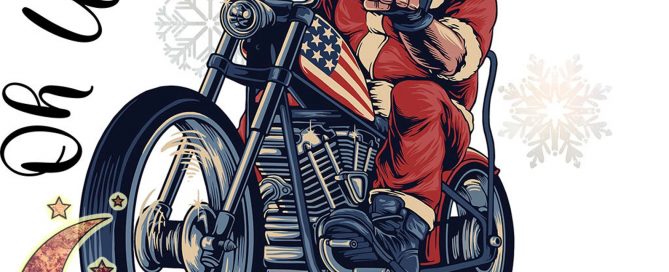The ultimate accolade
It is the ultimate accolade for being the very best in the world. It does not matter how long it has taken. In some cases, what skullduggery you may have indulged in while the rules have made the final verdict so complicated. On some occasions as many as five riders arrived at that last round with a chance of the title. Only one can emerge from the melee on top. They are, quite simply, the Champion of the world.
At the final round of this year’s Moto2 World Championship in Valencia, Brazilian Diogo Moreira joined the very select World Championship club, after a marathon of a season for him and his team
When the legendary John Surtees won the 1959 500cc World Championship, it took him just 41 days and four Grands Prix to be crowned World Champion in the seven-round Championship. Moreira’s Championship journey was so different and considerably longer. Twenty-two Grands Prix spread over 257 days visiting five separate continents. The 21-year-old certainly earned his crown as the very first Brazilian Grand Prix World Champion in every single way.
Surtees did not even have to leave Europe. Those four Grands Prix wins came in France, The Isle of Man, West Germany and Holland.
While this year’s 22 Grand Prix season is the largest number of races in one season in the 77-year history of MotoGP, amazingly it is not the longest in length of time. In 1964 the season started at the Daytona International Speedway in America on February 2nd, and finished on November 1st at Suzuka in Japan. There were 12 Grands Prix in that period, although the 500cc class did not compete in the final Japanese event.
In the past, working out who was the actual World Champion proved nearly as difficult as winning or reporting on the event. In 1967 great rivals Mike Hailwood and Phil Read arrived at the final round of the 250cc Championship at the Fisco circuit at Fuji in Japan on equal points. Neither finished the race, won by Ralph Bryans, and then the fun and games started that even confused two of the biggest motorcycle publications in Europe. Their two front page headlines told their eager readers, desperate for news from Japan, two very different stories and World Champions. Motor Cycle News blazed the headline celebrating Hailwood’s World title. Down the road, Motor Cycling were equally generous in their praise of the 250 cc World Champion Phil Read. New rules had been introduced that season, but at the time had not been translated from the original French. A translation and closer look at the rules indicated it was Motor Cycle News who had done their homework. Hailwood was declared the official 250cc World Champion because the Honda rider had won five Grands Prix compared to Read’s four.
Read was no stranger to controversial finishes and title deciders at the end of the season, but nothing came close to 1968. Honda had pulled out of Grand Prix racing and Yamaha dominated the smaller classes. At the start of the year, Yamaha and their two riders – Read and 125 cc World Champion Bill Ivy – agreed that Read should win his first 125 cc world title and Ivy his first 250. All seemed to be going to plan, and I remember watching the TT races in the Isle of Man which confirmed Yamha’s plans. Ivy was comfortably leading the 125cc race on the magnificent four-cylinder two-stroke Yamaha. He pulled over on the last lap to chat to spectators to allow Read to win the race as planned. Ivy duly won the 250cc event but as the season progressed Read decided to form his own plan ignoring the original agreement.
After clinching the 125cc title at Brno, he set off on his own agenda. Read embarked on his personal pursuit of making it a double with the 250cc title. He won the next round in Finland, Ivy fought back to win at the Ulster and the stage was set for a mighty last round confrontation at Monza, after the original final round in Japan was cancelled. It was winner take all and Read stuck to his guns. He won the race from Ivy and grabbed his third 250cc World title but of course it had to be complicated. They finished on equal points. Both had won five Grands Prix in the ten round season but the title was decided by the combined times in races both had completed.
Ivy was devastated by the skullduggery in the second half of the season and walked away disillusioned from motorcycle racing to pursue a new career on four wheels. He needed money to make the switch and the only way by using his considerable skill on two wheels. He returned to race the four-cylinder 350cc Jawa. Bill Ivy lost his life when he crashed the Jawa in practice for the 1969 East German Grand Prix at the Sachsenring.
Of course, Phil Read would be involved again but in very different circumstances. In 1971 five riders arrived at Jarama for the final round of the 250cc championship with a chance of winning the title. Read, Rod Gould, Jarno Saarinen, John Dodds and Dieter Braun all started the 35-lap race with a championship chance, but once again Read came out on top. His second place behind Saarinen was enough for the British rider to clinch his fourth 250 cc crown.
The closest ever World Championship showdown also came in the 250cc class at Phillip Island in 2000. The title was finally won by just 0.014s. Tech3 Yamaha team-mates, Shinya Nakano and Olivier Jacque, flew into Australia knowing who won the race or finished in front of his teammate would be crowned World Champion. No clever calculations, no skullduggery, just a simple case of winner takes all. It turned into a truly remarkable 25 laps of patience and belief. Frenchman Jacque showed plenty of both and a little bit more and there was nothing Nakano could do but wait for the inevitable. It came as the chequered flag was being readied and the pair on those silver Yamahas raced into the final straight for the last time. Nakano knew what was coming and there was nothing he could do to stop it. Lap after lap Jacque had never been more than five metres behind the Japanese rider. Many times he had rehearsed the World Championship winning move coming onto the long downhill finishing straight. Jacque had the pace but somehow found the patience to wait until the chequered flag was in sight, giving Nakano no chance to get back at him. At the finish all you could do was salute the skill and patience of the World Champion and commiserate with his defeated teammate.
This season three very worthy World Champions have emerged from the melee in very different circumstances. MotoGP World Champion Marc Marquez producing the greatest ever comeback in the history of our sport. Jose Antonio Rueda dominating the Moto3 season demolishing the opposition. Diogo Moreira broke the record for Grand Prix races to clinch the Moto2 crown before stepping up to MotoGP next season, and as Brazil’s first ever World Champion.
All three deserve that ultimate accolade that is only awarded to true World Champions.


